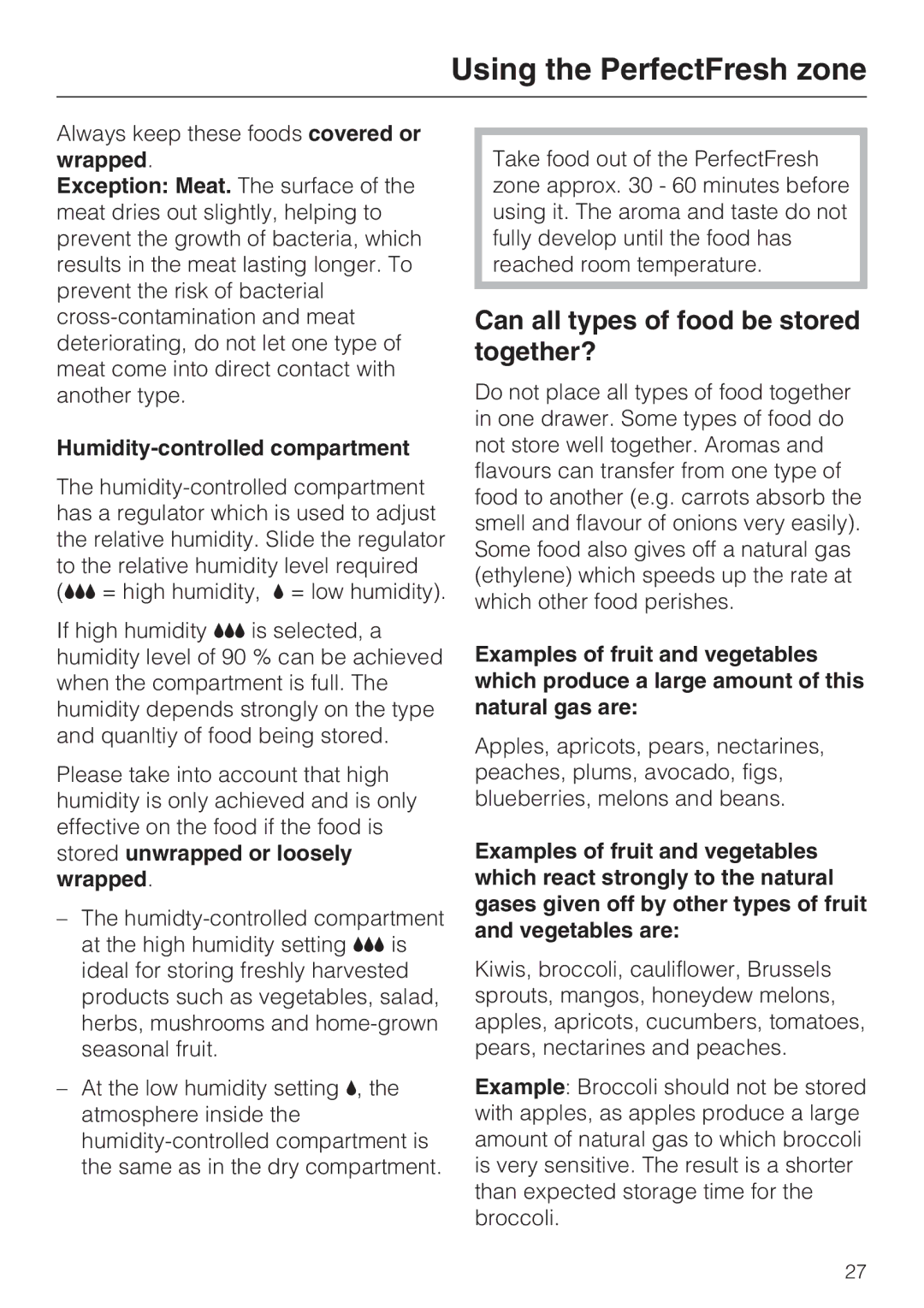KF 9757 ID specifications
The Miele KF 9757 ID is a premium built-in refrigerator that exemplifies the brand's commitment to quality, innovative technology, and elegant design. With a combination of functionality and aesthetic appeal, this refrigerator is ideal for discerning homeowners looking to integrate top-tier appliances into their kitchens.One of the standout features of the KF 9757 ID is its spacious interior, which offers ample storage for all types of perishables. With an impressive capacity of around 400 liters, it includes adjustable shelves, allowing users to customize the space according to their needs. The refrigerator's unique layout includes various compartments specifically designed for different types of food, ensuring that everything is organized and easy to access.
Miele is known for its cutting-edge technologies, and this model includes the company’s innovative NoFrost technology. This system prevents ice formation, eliminating the need for manual defrosting and ensuring that your food remains unblemished and fresh. Additionally, the DynamicCooling feature ensures that cold air is evenly distributed throughout the refrigerator, maintaining a consistent temperature and reducing the risk of temperature fluctuations that can spoil items.
Another remarkable characteristic of the Miele KF 9757 ID is its PerfectFresh Pro compartment. This specialized area allows for optimal storage conditions, extending the freshness of fruits, vegetables, and meats for up to three times longer than traditional refrigeration methods. The temperature and humidity levels are precisely controlled to provide the ideal environment for perishable goods.
The appliance also features Miele’s unique FreshMobile app, which allows users to monitor and control their refrigerator remotely. You can receive notifications about temperature changes or if the door remains open for too long, providing peace of mind, especially for busy households.
Design-wise, the KF 9757 ID is elegantly crafted to blend seamlessly with kitchen cabinetry, giving a streamlined look. Its interior lighting is strategically placed using bright LED lights, illuminating every corner and ensuring that even the smallest items are easy to find.
In summary, the Miele KF 9757 ID stands out for its spacious design, advanced technologies like NoFrost and DynamicCooling, and its unique PerfectFresh Pro compartment. With smart technology and a focus on user-friendly features, this refrigerator is an exceptional choice for those seeking luxury and performance in their kitchen appliances.

